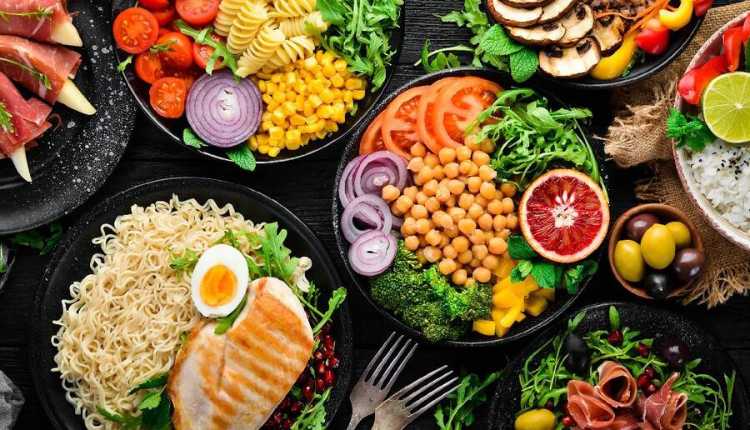Why avoid junk/fast food?
In today’s life, we spend money on having junk and street food from the markets. These junk or fast foods affect our health adversely. Our body requires nutrients in proper amounts. These junk foods do not contain nutrients in appropriate quantities and usually contain fats in very high amounts which make you obese. When one eats junk food, their belly gets full of nutrients with lesser nutrients (with too many fats usually), which makes it difficult for the person to eat nutritious and healthy food. This deprives him/her of essential nutrients like proteins, minerals, vitamins, etc. and increases only the contents of Carbohydrates and Fats in the body, which is not really healthy for a person.
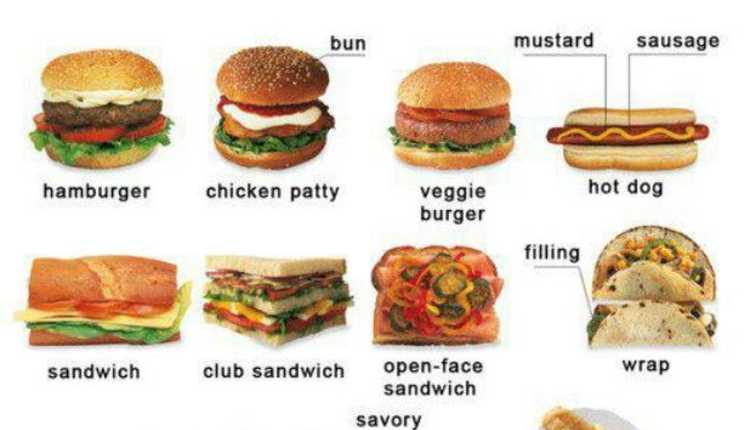
Some of the junk or fast foods not really good for the health
Importance of Nutrition in Food:
Nutrition is necessary for the maintenance, growth, reproduction, health, and to protect of diseases in a body. As part of a healthy lifestyle, good nutrition is essential. An ideal person must be physically, mentally, and socially strong to survive in today’s world. If one is not getting enough nutrition, he/she may start developing health-related issues that will directly and adversely affect him/her physically and mentally, which will eventually create a terrible impact socially as well.
What are a balanced diet and a diet plan?
A Balanced diet is a diet which contains foods in certain quantities and proportions so that the requirement for the calories, proteins, minerals, vitamins, and other nutrients is adequate including small reserve nutrients as well; this is a healthy diet. One may not get this by only eating junk or fast foods. A diet plan is a basic plan of what to eat, what not to eat, how much to eat, and many more. A basic healthy diet plan emphasises more on vegetables, fruits, whole grains, fat-free or low-fat dairy products. It also includes lean meats, poultry, fish, beans, eggs, and nuts. One must limit the use of saturated and Trans fats, Sodium, and added sugars. One must also control portion sizes.
Important nutrients required by the body:
a) Carbohydrates: These are sugars, starches, and fibres usually found in fruits, grains, vegetables, and milk products. These are one of the most basic food groups which are required in the body in huge quantities and are very important to a healthy diet. Carbohydrates provide energy, store energy building macromolecules, and spare Proteins & Fats for other uses.
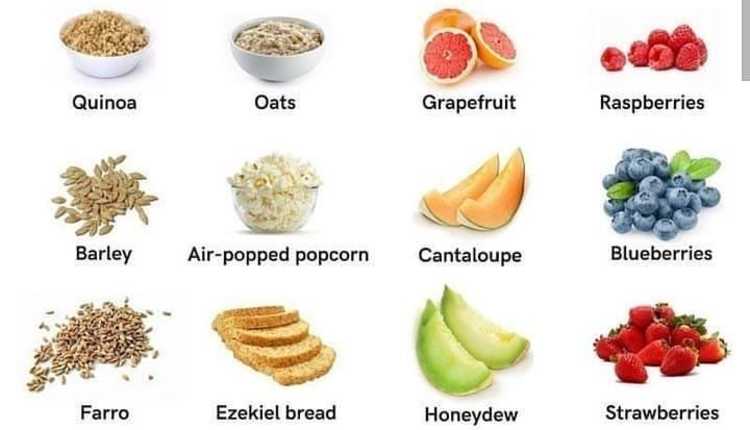
Some of the Carbohydrate-rich foods
b) Proteins: These are macromolecules formed by about 20 different amino acids. They are required for the structure, function, and regulation of the body’s tissues and organs.
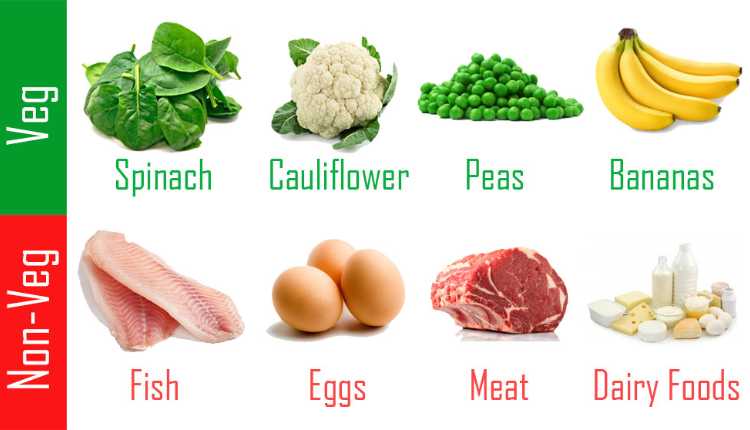
Some of the Protein-rich foods
c) Fats: With fats, one here means esters, fatty acids, and glycerol. All these are important for the body in a particular quantity but make a person obese if taken in larger quantities. They provide the body with energy so that we can work properly.

Some of the foods rich in fats
d) Vitamins: These are organic molecules which are micronutrients (required in small quantities by the body) for the proper functioning and metabolism (chemical reactions inside the body). There are 13 types of vitamins which are all essential (not synthesised in the body and needed to be taken in the diet) which include Vitamin A, C, D, E, K, and 8 forms of Vitamin B.
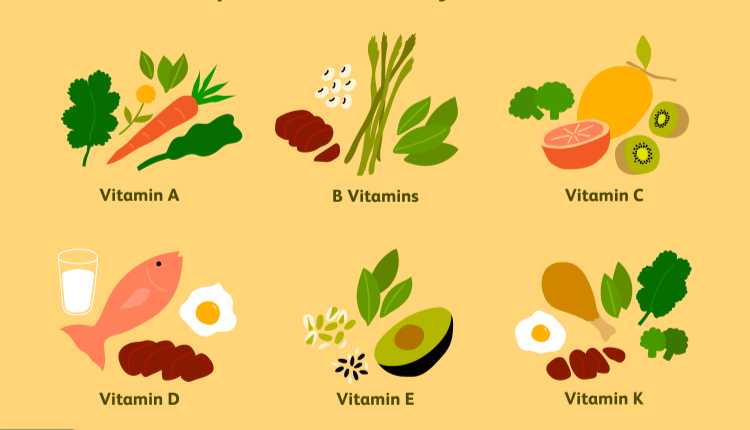
Some food items rich in Vitamins
e) Dietary fibres: are also known as roughage are also a type of carbohydrates that cannot be digested by the human body but helps in the digestion of other nutrients and makes their way out through the faeces. They maintain bowel health, helps control blood sugar levels, and many more.
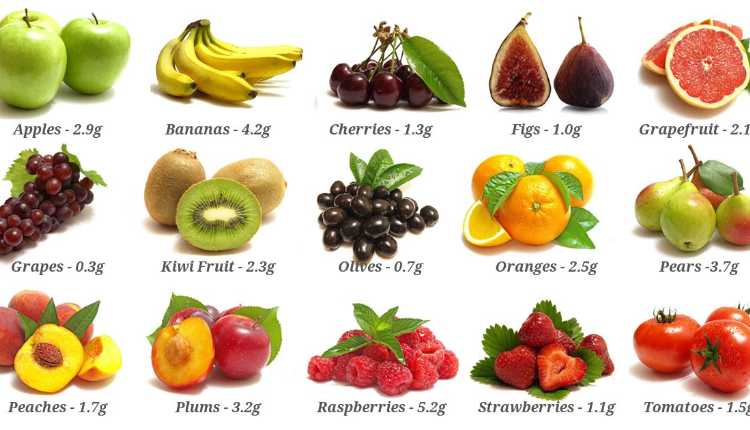
Some food items rich in dietary fibres
f) Minerals: These are elements from the earth which are required in minimal quantities in the body. Some of the major ones are Calcium, Phosphorous, Magnesium, Potassium, Sodium, and many more. Every mineral has its own importance and functions. Still, some of their significant functions include building strong bones and teeth, transmitting nerve impulses, maintaining a regular heartbeat, making hormones, and many more.
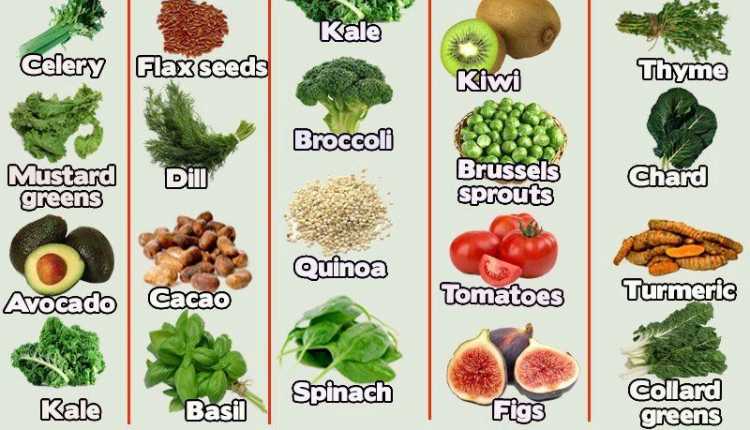
Some foods items rich in minerals
g) Water: It is an essential nutrient in which all biochemical reactions take place. Therefore, it is required as a medium for all chemical reactions to occur. It also helps fill or complete large structures of protein and glycogen, and it is also responsible for the transport of all the nutrients across the body.
Weight gain and weight loss:
Weight loss or gain depends on calorific consumption or expenditure. If you intake more calories (in the form of carbohydrates and fats) and expend less energy (in the way of exercises and daily routine), you will gain weight. What you can do only here is to eat less and exercise more. Similarly, if you consume fewer calories and expend more energy, you may get thinner. For this one, one has to increase their calorie intake and minimise their energy expenditure.
Factors affecting Calorie intake:
It is important to know how much to reduce eating and how much to increase workout. The ideal calorie intake for Urban India is 2,200, and Rural India is 2,400 per day. This value may vary a little in different countries and according to different data sources. This calorie intake may vary due to many factors like gender, age, pregnancy, menstruation, lactation, exercises, type of diet, type of lifestyle, and many more. One has to keep all these things in mind while making a diet plan for you.
What to eat (Healthy Foods)?
Vegetables, Fruits, Nuts & Seeds, Legumes, Roots & Tubers, Whole Grains, Dairy, Herbs & Spices, Healthy Fats (like coconut milk, full-fat dairy, edible oils, ghee, etc.), Protein Sources (Tofu, Dairy, nuts, eggs, meat and other animal sources). One must drink fresh juices, normal water, sparkling water, unsweetened tea, etc.
What not to eat?
Sweetened beverages, High-sugar foods, Sweeteners, Sweetened Sauces, High-fat foods, Refined grains, Trans fats, Refined oils. Most of the junk foods are unhealthy, especially the ones we eat at restaurants, streets, etc.
How to make a diet plan for weight loss?
This is not that hard. You first must know in which age group you are, what are your conditions and all and later decide how many calories you should take in a day. Later calculate the number of calories you actually take in a day. Surf the web and you will find details of all the foods that you eat and how much calories they provide you. Since you have to lose weight, you have to minimise the calorie intake somehow. You specifically have to try and cut in fats, oils, and carbohydrates from your diet as these are the significant problems. Cut on sugars, oils, and fats.
Start weight losing exercises as well they are essential. If you have issues with doing exercises, do read How to Trick Your Brain into doing a Work? Do not cut too much or start your dieting for a long time. A long time fasting is not suitable for your health. The body must get at least the required amount of nutrients. Focus more on snacks rather than actual food. Some of the snacks that are best for such cases are – nuts, Vegetable soups, Fennel seeds, salted popcorns, Bean Salad, Roasted Chickpeas, Sprout Salad, Vegetable chaat, fruits, unsweetened Yogurt, etc.
How to make a diet plan for weight gain?
This is a little harder than the weight loss case but achievable. Here too, you have to know how many calories a day you should take. In the previous case, you must try to take lesser calories than normal, and in this case, you have to do precisely the opposite, i.e. you have to try to take a little more calories than in the previous case. Here, you specifically have to increase your diet and take more rest as well. Exercising here is essential for building muscles. Keeping your body in shape is also necessary. Include more carbohydrates, proteins, and slightly more fats in your diet. Try eating at small intervals of time. It is not required to eat only three big meals a day. Try and make it five small meals a day which will eventually increase your diet and better digestion as well. Do overeat not and get fat. Keep in mind, ‘Being obese is a far bigger problem than being a little skinny’. Also, remember ‘Gaining weight is difficult, and consistency is the only key to achieve it’. In some instances, the same goes for weight loss cases as well. Some of the foods or snacks that are best for such patients are – Nuts, dried fruits, meat, eggs, tubers, grains, high-fat dairy, etc. which we have covered in detail in the article how to gain weight healthily.
7-day diet plan for weight loss: Obesity is a widespread problem across the world. So, here is a general example of a diet plan for weight loss. This diet plan is based on an Indian vegetarian diet.
- Monday:
- Breakfast: Multigrain Parathas (with any fruit or vegetable juice)
- Lunch: Large salad with Rajma Curry
- Dinner: Lentil Pancakes
2. Tuesday:
- Breakfast: Buckwheat Porridge (with any fruit or Vegetable juice)
- Lunch: Whole-grain roti with vegetable soup
- Dinner: Baked Tofu with Vegetable curry
3. Wednesday:
- Breakfast: Brown rice Idli & Sambhar
- Lunch: Whole-grain roti with vegetable curry
- Dinner: Tofu curry with a spinach salad
4. Thursday:
- Breakfast: Chana dal pancakes (with a glass of milk)
- Lunch: Brown rice and Chickpea curry
- Dinner: Khichdi with sprout salad
5. Friday:
- Breakfast: Cinnamon Porridge (with a glass of fruit or vegetable juice)
- Lunch: Whole-grain roti with mixes of vegetables
- Dinner: Palak Paneer with vegetables
6. Saturday:
- Breakfast: Yogurt
- Lunch: Whole-grain roti with mixed vegetable
- Dinner: Chana masala with rice & green salad
7. Sunday:
- Breakfast: Dalia (With a glass of milk)
- Lunch: Sambhar with Brown rice
- Dinner: Tofu curry with potato sabzi
How to make a diet chart for a school project?
This is pretty easy. You see the above example. That one is a diet plan for those who want to lose weight. Here you have to make a diet plan for yourself depending on how your conditions are. If you are obese, you can follow the above chart with some specific changes for yourself, if you are skinny, you have to create one for yourself with more consumption of calories, and if you are fit and want to remain in the same shape, you have to take the appropriate amount of calories. For school, the project keeps in mind that your chart must look attractive, include necessary food products, and easy to read. Also, you must be knowing why or why not you are putting something in which category when your teacher asks you to. Always make this in a tabular form while submitting it as a school project. You will find a lot of ideas on the web as well.
Prepare a diet chart to provide a balanced diet?
A balanced diet is the kind of diet in which specific quantities of foods and their proportions are adequate with the perfect amount of calories, proteins, carbohydrates, fats, oils, minerals, vitamins, etc. in them. Also, it includes some reserve stored food materials. This one is basically for those who are fit and want to maintain that level of fitness. This diet plan needs to be improvised or wholly changed for different cases like growing age, pregnancy, intense workout sessions, etc. Prepare a diet chart yourself keeping in mind the following things –
- Breakfast: You can choose from any of the following – Any normal-sized sandwiches (Preferably vegetable), two eggs fried or poached, Any low-fat yoghurt, oatmeal, cornflakes, nuts, berries. There are many more things for breakfasts try to keep it plump. Also include at least a glass of fruit juice, vegetable juice, or a glass of milk.
- Lunch: Here, try to limit processed foods. Go for whole foods like fruits, vegetables, nuts, whole grain, and lightly processed foods. Go for Roti, sabzi, dal, Chaawal, Salad, Papad, Buttermilk the basic North-Indian or South-Indian diet at your convenience.
- Evening snacks: Mixed nuts, chips, yoghurt, dark chocolate, apple slices, peanut butter, etc. can be taken here.
- Dinner: Try to keep the dinner light and try having it at least 2 hours before going to bed. Try and include veggies, dairy products, potatoes, bread, rice, pasta, etc. don’t forget the dairy here; it is crucial. Try and drink at least a glass of milk before going to bed.

